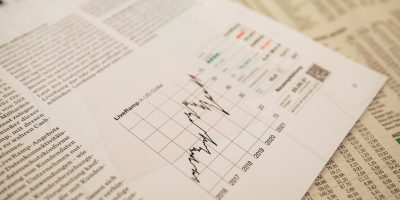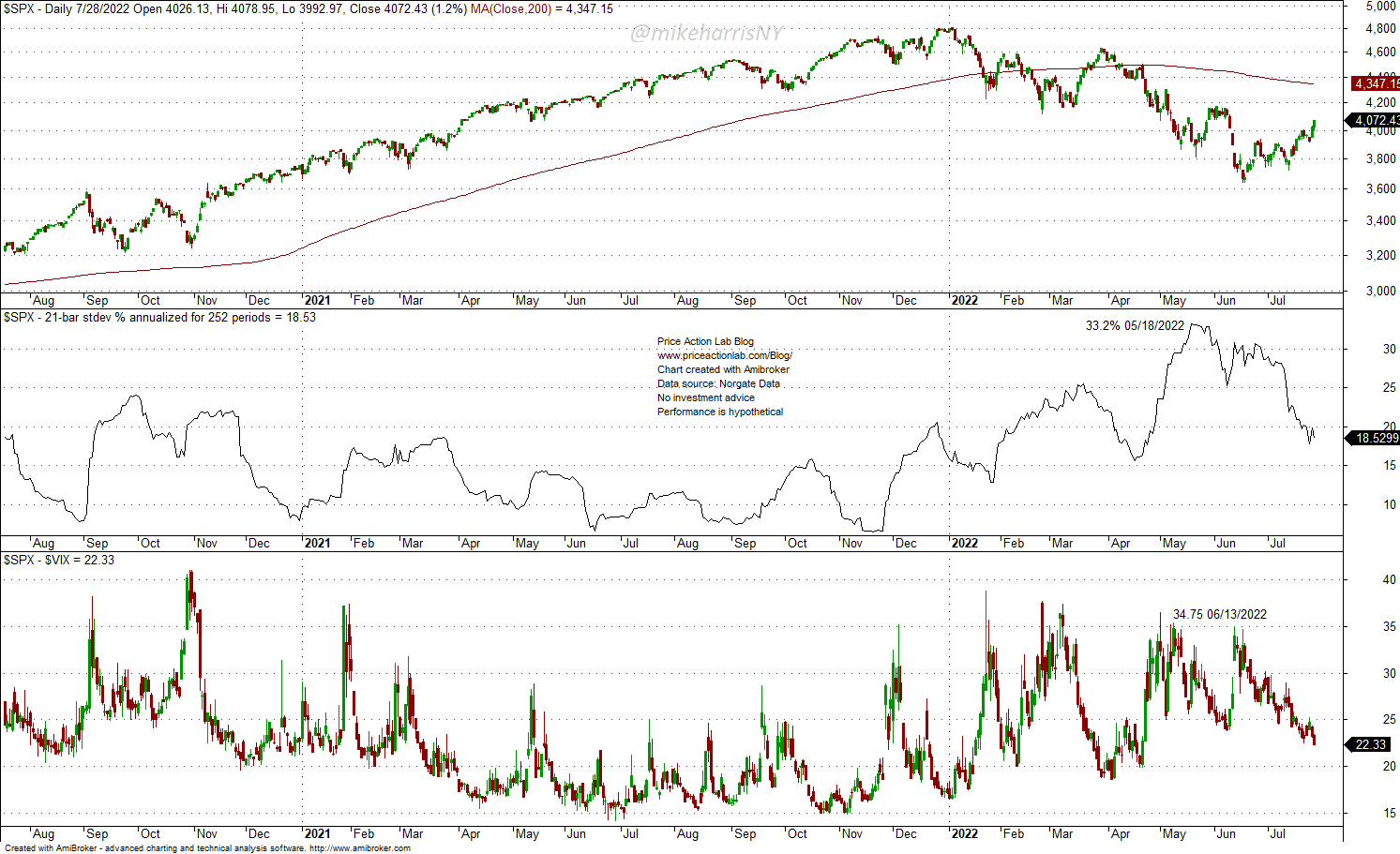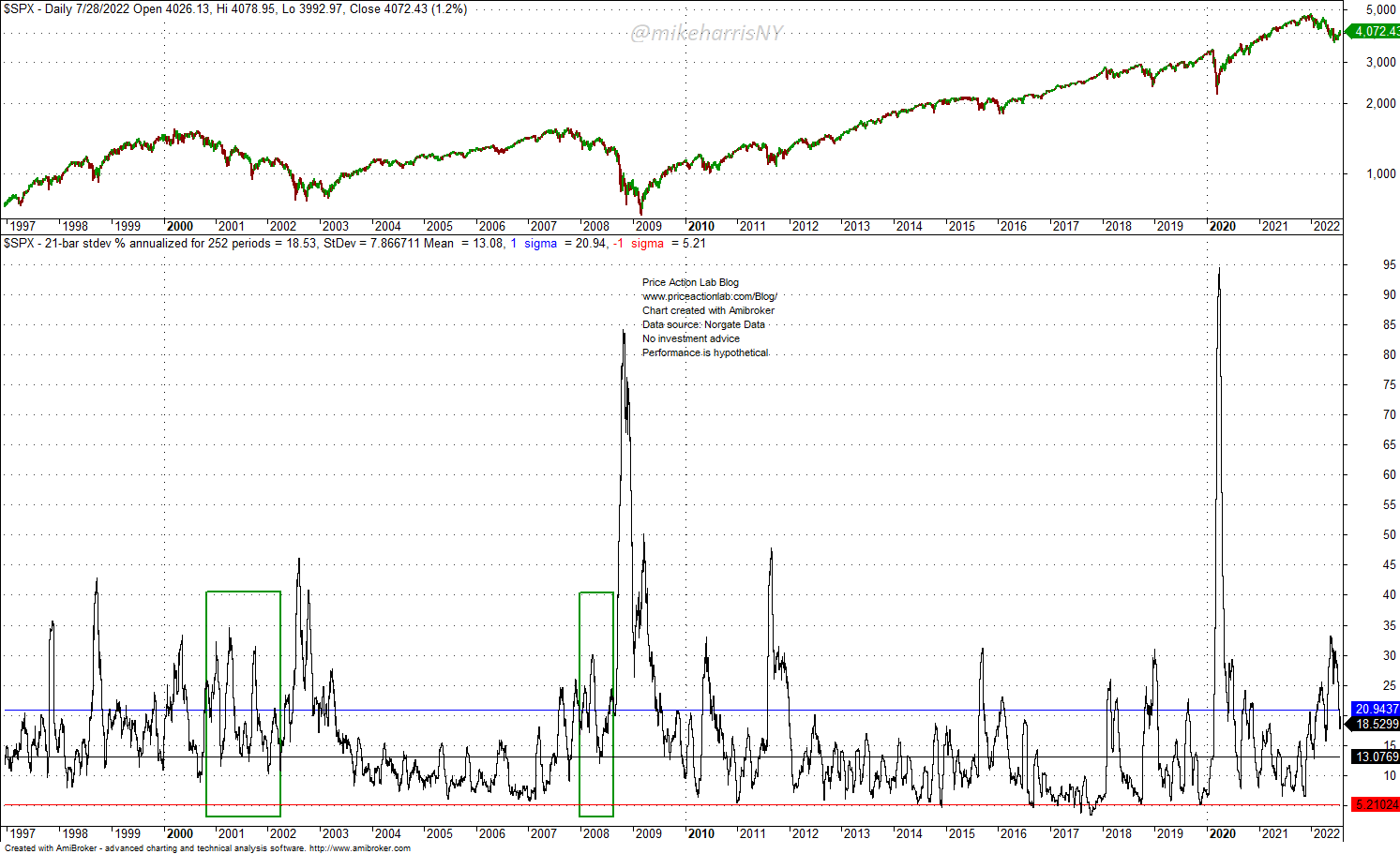After a sharp rise from mid-April to mid-May of this year, stock market volatility is crashing. This has been historical a good sign for equities, except when it was not.
The daily chart below shows the 21-day annualized volatility of the S&P 500 index.
Realized volatility nearly doubled from mid-April to mid-May and peaked at 33.2%. Since May 25, the realized volatility has been falling steadily, and it is now at 18.5%.
Implied volatility, as measured by VIX, has also declined from 34.75 on June 13 to 22.33. The rapid decline in both realized and implied volatility is a good sign for equities historically, except when it has generated false signals, and there have been quite a few during past bear markets, as shown below.
During the dot-com bear market, there were three false signals, with realized volatility rising above 30 and then dropping below the +1-standard deviation, only to rise again. During the financial crisis bear market, there was another similar false signal in April 2008, followed by a decrease and then a spike due to the market collapse.
Volatility is a good technical indicator, but as with all derivatives of prices, it lags price action and can generate false signals that end up being too costly.
Premium Content 10% off for blog readers and Twitter followers with coupon NOW10
Disclaimer: No part of the analysis in this blog constitutes a trade recommendation. The past performance of any trading system or methodology is not necessarily indicative of future results. Read the full disclaimer here.
Charting and backtesting program: Amibroker. Data provider: Norgate Data








